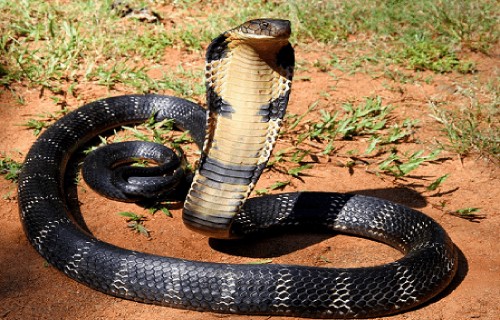
It’s our hope that each of you, our readers, will enjoy and appreciate this article we present about these 4 Remarkable Reptiles of Thailand. It was certainly our pleasure to compile the information for you. May it provide you with both education and increased awareness.
These few species listed herein represent only a portion of the natural wonders found throughout the region, though. Yet, it’s our belief that they serve as excellent representations of the wonders found here. Check out some of our other articles for similar marvels.
Saltwater Crocodile Facts
- Starting off this article about these 4 Remarkable Reptiles of Thailand we present you with the powerful Saltwater Crocodile.
- This magnificent work of Nature and evolution most frequently goes by its informative common name across its entire range. That term, however accurate, isn’t the only name applied to it, however. In point of fact, several others are sometimes used.
- The alternate names themselves also often provide clues to its nature. These include such terms as the Indo-Pacific crocodile, esturarine crocodile, sea crocodile, and marine crocodile. The animal’s also sometimes informally referred to as the saltie.
- Professional researchers, meanwhile, typically refer to the creature by its scientific name. That’s the technical name of Crocodylus porosus. Regardless of which name one chooses to use when referring to it, though, it’s an especially impressive crocodilian.
- The renowned German naturalist Johann Gottlob Theanenus Schneider made the first formal recognition of the reptile. The well known researcher acknowledged this incredible example of evolution as a separate and distinct species in the year 1801.
- The animal appears, for the moment, at least, to be maintiaing a population base that’s both stable and sufficient. That further seems to hold true throughout the entirety of its range. The IUCN therefore, presently lists the reptile as Least Concern on its Red List.
- The amazing Saltwater Crocodile nevertheless faces dangers that could potentially threaten it in the future. Habitat loss poses a potential threat, due to human expansion. The ongoing process of climate change, however, likely condstitutes its greatest threat.
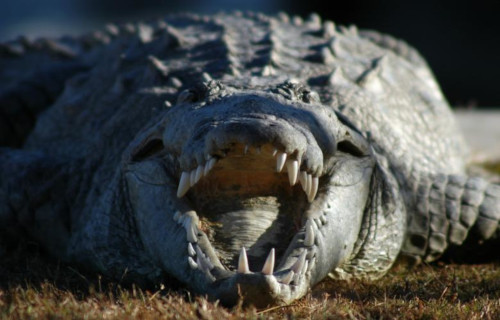
Saltwater Crocodile Physical Description
Sheer size alone isn’t the only trait of the Saltwater Crocodile that impresses those who view the creature. That characteristic nonetheless certainly does bear mentioning. That’s because this species presently constitutes the largest of all currently known crocodilians.
The species also, like many of its relatives, displays a degree of the physiological characteristic of sexual dimorphism. In its specific case, though, this ranks as particularly severe. That’s due to the fact that the males attain a length roughly twice that of females.
The significantly longer males reach an average legnth measuring about 20 ft (6 m). Exceptional specimens, however, sometimes attain lengths of as much as 23 ft (7 m). The males further reach a weight that averages approximately 1,000 lbs (453.6 kg).
Females of the species, meanwhile, only attain an average length measuring approximately 10 ft (3 m). Even the exceptional individuals rarely exceed this by much. Sheer mass, however, remains starkly contrasted, with females rarely exceeding 330 lb (150 kg)!
While rare indivuals exceed these weights in both genders, the two sexes remain otherwise virtually indistinguishable in simple appearance. Its snout also develops wider than most related species. A pair of ridges also extends the length of the snout, from the eyes.
The body of the Saltwater Crocodile further differs from most others in its girth. Its body develops as much stouter in form. In coloring, most adults manifest a dark, greenish-drab shade. A few light gray or tan areas sometimes appear, however, in various spots.
- Kingdom: Animalia
- Phylum: Chordata
- Class: Reptilia
- Order: Crocodilia
- Family: Crocodylidae
- Genus: Crocodylus
- Species: C. porosus
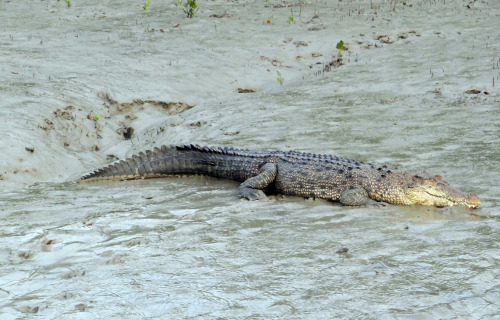
Saltwater Crocodile Distribution, Habitat, and Ecology
Fortunately, the remarkable Saltwater Crocodile evolved as native to a comparatively broad swathe of the globe. Interestingly, furthermore, that range roughly straddles the equator. It further does so, by random chance, almost equally across both hemispheres.
This animal appears as far north as the eastern coast of the country of India. From there, its range extends through Sri Lanka, Bangladesh, Myanmar, Thailand, Malaysia, Cambodia, and Vietnam, to name a few. That range extends as far south as northern Australia.
Wherever it makes an appearance, though, it displays highly specific preferences in terms of habitat. That’s because the remarkable crocodilian makes its home solely along the coastline. Individuals do, however, occasionally swim far out to sea, outside their range.
Most specimens spend the vast majority of their time inhabiting very specific habitat types. These principally consist of river deltas and mangrove swamps. In some regions, the incredible animal also migrate to warmer parts of its range during the local winter season.
The Saltwater Crocodile also differs from most of its kin in yet another manner. Although most crocodilains live as social creatures, this species mainly lives a solitary life. Most individuals, especially the males, further exhibit extremely strong territorial drives.
It also spends much of its time in a lethargic state. This allows it to survive for months at a time without feeding. When it does feed, however, it does so strictly as a carnivore, like other crocodiles. It further represents an apex predator throughout most areas of its range.
King Cobra

King Cobra Facts
- Next up in this compendium of 4 Remarkable Reptiles of Thailand comes the world-renowned snake appropriately named the King Cobra.
- The truly impressive creature remains best known for one outstanding fact. That’s the amazing statistic that it ranks as the longest known species of venomous snake known to man. Despite its great length, however, it remains rather surprisingly light.
- The common name of this reptile creates a great deal of confusion, however, being very deceptive. That’s because, regardless of its other impressive attributes, it does not qualify as a true cobra. True cobras have decidedly different attributes.
- It nevertheless remains worthy of respect. In point of fact, this remarkable animal actually forms the sole member of its own genus. No other known species even comes close to its physical qualities. This fact alone also makes the snake of particular interest.
- This fascinating snake also remains worthy of being considered extremely dangerous to humans if provoked. This status holds true due to a combination of two factors. Those are the toxicity of its venom, and the sheer quantity of venom produced.
- For the moment, the IUCN lists the amazing King Cobra as Vulnerable. That status is reflected on the organization’s Red List. Habitat loss forms a grave peril, given its region, of course. It also faces the threat of climate change, like other species.
King Cobra Physical Description
Quite remarkably, the beautiful but deadly King Cobra averages about 13 ft (4 m) in length. Exceptional individuals, however, sometimes attain a length of a much as 18.5 ft (5.6 m). Both measurements far outdistance any other known venomous snakes, though.
Despite its great length, however, the extremely dangerous snake remains a relative lightweight reptile. Surprisingly, this reptile typically averages no more than 13 lb (6 kg) in weight. In point of fact, the heaviest King Cobra on record only weighed 26 lb (12 kg.).
In color, the fabulous reptile also typically presents either one of several distinct color patterns. This trait further separates it from most related creatures. These patterns include either an olive-green, tan or black, with yellow bands crossing the body along its length.
- Kingdom: Animalia
- Phylum: Chordata
- Class: Reptilia
- Order: Squamata
- Family: Elapidae
- Genus: Ophiophagus
- Species: O. hannah
King Cobra Distribution, Habitat, and Ecology
The mighty King Cobra evolved as endemic to the forest regions of Southeast Asia. This truly impressive range includes India, Indonesia, and the Philippines. Within that range, individual specimens typically prefer to inhabit rather dense highland forests.
The fabulous creature also primarily preys on other snakes. However, most individuals will also consume small invertebrates. The King Cobra remains classified as diurnal, and primarily hunts during the day. During the night, it remains concealed, unless disturbed.
Despite its exaggerated reputation, this reptile isn’t typically aggressive unless provoked. When this happens, though, it will raise as much as one-third of its body length into the air. Subsequent to that, it will also flatten its head in preparation to strike.
This species also remains capable of delivering multiple envenomings in a single encounter. This further makes the incredible King Cobra stand out, since many, although certainly not all, other poisonous snakes lack this ability to repeatedly poison its victims.
In addition to its other unique attributes, it represents the only known snake that builds nests for its eggs. These it builds using dry leaves and twigs. One mating produces anywhere from 7-43 eggs. Those that survive to adulthood live an average of about 20 years.
Reticulated Python
Reticulated Python Facts
- Our next choice for inclusion in this gathering of these 4 Remarkable Reptiles of Thailand is the powerful animal named the Reticulated Python.
- The amazing animal known by the title used here is a particularly large variety of python. In fact, although not the most heavily built, the animal currently ranks as the longest snake on earth. That impressive fact alone makes the creature worthy of note.
- Just as with other types of pythons, though, this truly amazing animal feeds as a constrictor, since the enormous snake has no venom. Fully grown adult individuals aditionally become more than sufficiently powerful enough to kill a human being.
- Such attacks on human beings by this particular species remain virtually unknown, however. This holds true despite what many people tend to believe. Though such events rarely occur, when they do, it usually happens in specific circumstances.
- These situations include if the snake has been removed from its natural habitat, or that habitat, frequently located near water, is disturbed. Related to this is the fact that the awesome Reticulated Python also ranks as a rather excellent swimmer.
- This truly remarkable trait ranks as one that the incredible reptile further shares with many of its related species around the world. Among this particular example of constrictor, however, adult specimens even occasionally venture far out at sea.
Reticulated Python Physical Description
Most notably, the Reticulated Python fully earns its designation as the longest snake known to man. To the amazement of some, exceptional adult specimens sometimes approach 23 ft (7 m) in length. These truly gigantic individuals do not occur often, though.
Typical adults actually measure around 20 ft (6.1 m) in total length, and the usual mature individual further weighs about 165 lb (75 kg). The species presents no discernible sexual dimorphism, however, with both genders possessing the same appearance and size.
Its markings remain highly distinctive, and typically consist of intricate geometric patterns. These patterns also combine a quite wide variety of color shades. The exact colors vary according to the geographical range, sometimes making the snake difficult to identify.
This great variation in coloring among the Reticulated Python also represents an evolutionary adaptation to the local environment. Its remarkable natural camouflage also serves to make this highly dangerous animal almost invisible in its respective habitats.
- Kingdom: Animalia
- Phylum: Chordata
- Class: Reptilia
- Order: Squamata
- Family: Pythonidae
- Genus: Python
- Species: P. reticulatus
Reticulated Python Distribution, Habitat, and Ecology
The Reticulated Python appears to be endemic to quite a wide range. This area extends across much of Southeast Asia. In fact, this range extends from India, Bangladesh, and Laos, through Indonesia. It also includes numerous island countries, such as the Philippines.
In addition to its other impressive characteristics, it remains highly adaptable to its surroundings. As a result of this ability, it thrives in a rather wide variety of habitats. However, these regions of habitation typically include woodlands, grasslands, and forests.
But even within that native range, this fascinating reptile remains quite versatile in its habitat requirements. Amazingly, the enormous animal frequently inhabits rivers, lakes, and even large streams within these areas, being an excellent swimmer.
It feeds almost exclusively as an ambush predator, like other known types of constrictors. The diet, however, understandably varies, depending upon its location. This commonly includes such prey as larger mammals, but smaller specimens will feed on birds and rodents.
This species, like other snakes, evolved as oviparous. A female Reticulated Python will lay anywhere from 15-80 eggs per clutch, after mating. These then require an average of about 88 days to hatch. Newly hatched specimens average about 2 ft ( 61 cm) in length.
Leatherback Sea Turtle
Leatherback Sea Turtle Facts
- Closing out this compilation of 4 Remarkable Reptiles of Thailand we give you the marine marvel called the Leatherback Sea Turtle.
- The most notable statistic about this truly magnificent work of Nature remains the fact that it ranks as a legitimate giant of its kind. In point of fact, this truly fabulous animal presently lists as the largest of all known living turtles.
- This remarkable and quite impressive creature also constitutes the fourth heaviest of all living reptiles. Only three of the modern crocodilians surpass it in terms of sheer weight, which remains quite an accomplishment for it.
- The fascinating animal further distinguishes itself from all other sea turtles in another manner, as well. This holds true since the amazing sea reptile represents the only known species of its kind that does not possess a bony shell.
- Sadly, however, the Leatherback Sea Turtle now finds itself facing threats to its existence. As a result, the IUCN now lists it as Vulnerable, on its Red List of Threatened Species. The main threats include chemical and plastic pollution, and boat strikes.
- Most regrettably, the estimated number of nesting females among this reptile has plunged dramatically since 1980. At that time, these numbered about 115,000. Currently, however, that number has dropped to fewer than 43,000.
Leatherback Sea Turtle Physical Description
Without question, in the minds of many, the mature Leatherback Sea Turtle represents a truly impressive sight to see. Some impressive individuals reach a total length of as much as 7.2 ft (2.2 m), and achieve a weight often reaching as much as 1,540 lb (700 kg).
Coincidentally, this breathtaking animal also has the longest front flippers of any turtle. These out-sized appendages average an astonishing length of 8.9 ft (2.7 m). That measurement makes them the longest both in sheer length and relative to body size.
In coloring, the fabulous reptile also displays a dual pattern to its appearance. Its upper carapace typically shows a combination of black and dark gray, while the underside of the body generally presents a significantly lighter color scheme.
It is the outer covering of the Leatherback Sea Turtle, however, that separates it from all others. That’s due to an amazing divergence of evolution. Instead of a bony shell, this creature has a covering of extremely thick, tough leathery skin to protect it.
- Kingdom: Animalia
- Phylum: Chordata
- Class: Reptilia
- Order: Testudines
- Family: Dermochelyidae
- Genus: Dermochelys
- Species: D. coriacea
Leatherback Sea Turtle Distribution, Habitat, and Ecology
It must be pointed out that, thankfully, the marvelous Leatherback Sea Turtle has an almost global range. The majority of its population occurs in the tropical and subtropical oceans. Its range, however, extends from the Arctic Circle to Cape Agulhas, in Africa.
Its population numbers, though, appear to be mainly concentrated in three primary populations. Not only that, but each of these remains slightly genetically distinct from the others. These occurs in the Atlantic, western Pacific, and eastern Pacific oceans.
Each of these do share many of the same traits, however. Firstly, all prefer to inhabit the open ocean. Secondly, all tend to follow their prey as it moves during the day. This often results in it moving from deep water during the day to shallower regions at night.
In an interesting twist, juveniles typically prey on various small species for their food, while the adults feed almost exclusively on various types of jellyfish. In contrast, mature adults has few natural predators. The few include orcas and large sharks.
Despite all these facts, the Leatherback Sea Turtle is perhaps best known for its nesting practices. Although most of its kind return to the exact beach of their birth, it remains less selective. For it, any beach in the same region seems to serve perfectly well.
4 Remarkable Reptiles of Thailand
We hope that each of you enjoyed reading, and hopefully learning from, this article we’ve written for you about these 4 Remarkable Reptiles of Thailand. It’s also our hope that doing so has left you with either a new or renewed appreciation for such wonders of Nature.
Unfortunately, however, many of their kindred around the world now find themselves facing strong threats to their continued existence as a species. Many of those dangers, in fact, stem from the actions of mankind. We must do all we can to protect and preserve them all.
Check out our other articles on 3 Surprising South American Moths, The Mighty Tornado, Africa’s Many Geological Masterpieces, 7 Breathtaking East Coast Wonders
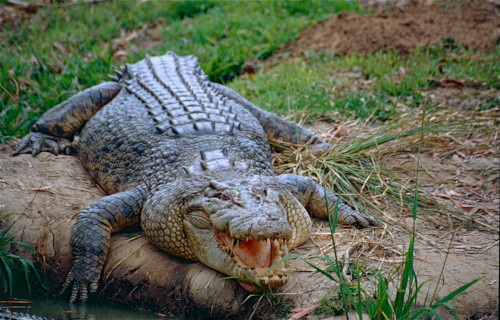

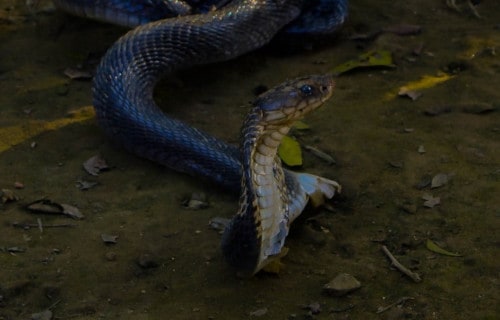
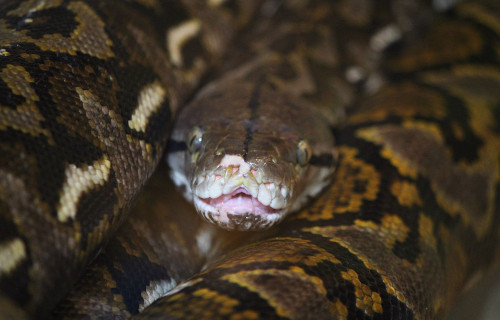
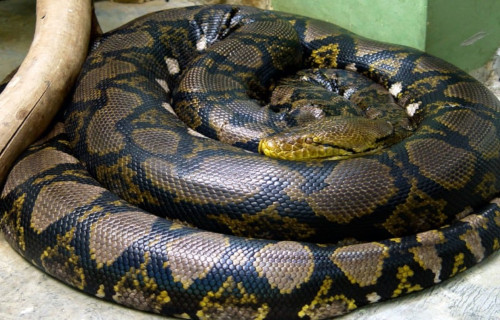
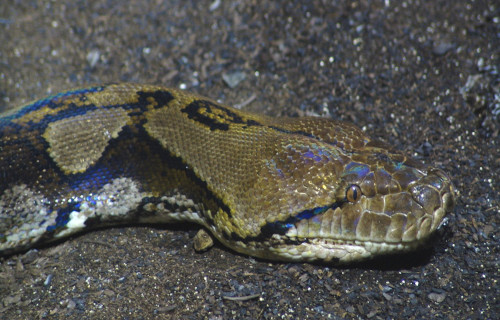
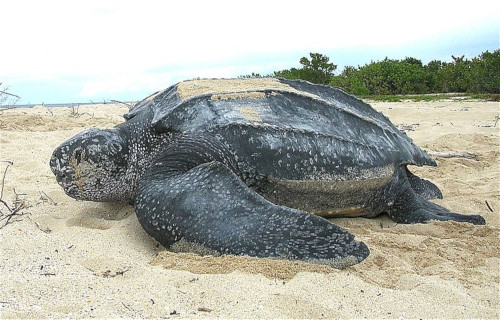
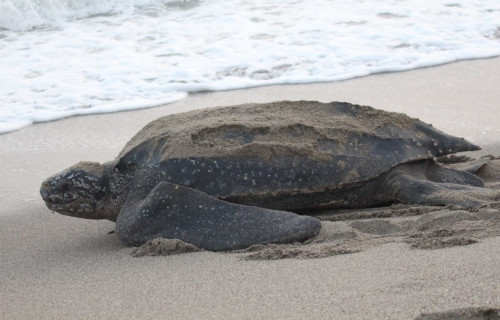
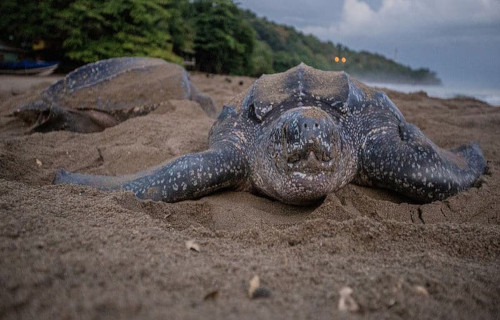









Leave a Reply